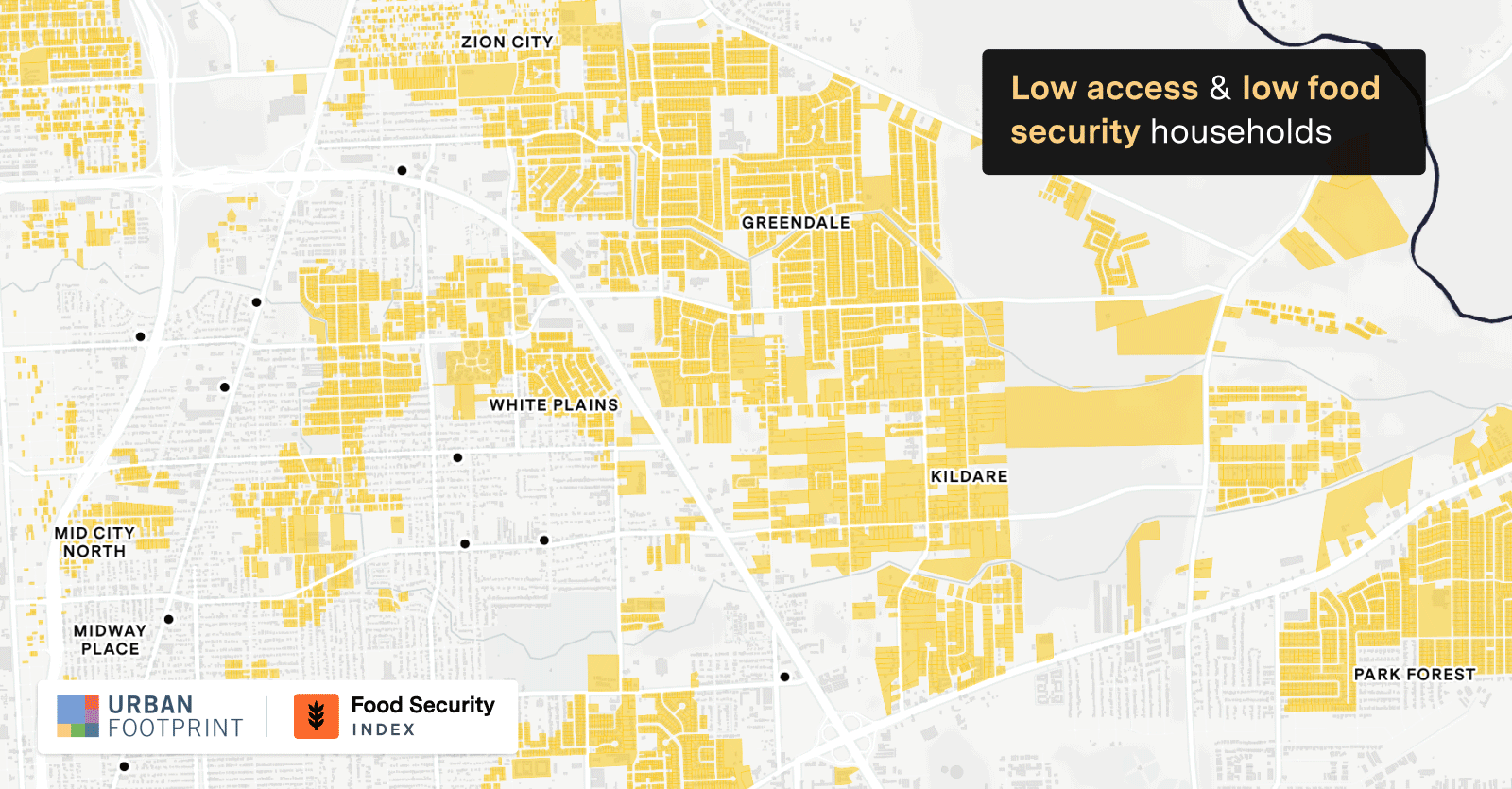
The COVID-19 pandemic has spiraled into a series of interwoven health, economic, and social crises that threaten to undermine the capacity of public institutions charged with supporting the unprecedented number of Americans facing deepening financial and social distress. The scale of the challenge is monumental, with unemployment levels rising above those of the 1930s Great Depression. Americans facing critical income shortfalls are finding themselves without access to basic necessities, including food.
Our analysis estimates that food insecurity is impacting more than 80.2 million Americans today, a dramatic increase of more than 25 million in less than 2 months. Economic stress and food insecurity are spread far and wide, and when we hone in on cities and communities, it’s evident that now, more than ever, where we live matters for our social, economic, and health outcomes. Those with pre-existing social and economic vulnerability are experiencing deepening pain and will find it harder to recover unless resources are deployed to prevent the bottom from dropping out.
UrbanFootprint is partnering with the Louisiana-based Center for Planning Excellence (CPEX) to unpack the scale of food security and related challenges in Louisiana, and to support agencies and front-line organizations in deploying resources and effective interventions where they are needed most.
As part of our shared mission to deliver actionable insights for an equitable recovery, UrbanFootprint is deploying our COVID-19 Recovery Insights Platform to help cities, state agencies, and front-line responders in Louisiana map and analyze social vulnerability, economic stress, health and accessibility at an unprecedented level of granularity.
In a statewide analysis driven by the new platform, we find that 1 in 3 Louisiana residents now live in food insecure communities. Clearly, the need to address food insecurity in the wake of COVID-19 is urgent. In the report below, we’ll examine how COVID-19 has impacted food insecurity in Louisiana and how we might use this data to take action and build a new model of resilience. Together with CPEX, it’s our hope data-driven insights on where relief is needed most will help to expedite an effective and equitable response.
The COVID-19 Recovery Insights Platform
Before we dive into the report, we wanted to provide a quick explanation of the methodology and data informing the analysis. The COVID-19 Recovery Insights Platform, an extension of UrbanFootprint, is a data and analytics platform that helps agencies and front-line organizations:
- Advocate for federal relief/stimulus resources
- Allocate state resources amongst and within cities
- Anticipate shortages and ensure efficient distribution of resources and supplies
- Identify new distribution sites for food relief
- Provide tactical coordination with food banks, food pantries, and relief agencies
The platform is powered by a series of Social Vulnerability, Economic Stress, Health, and Accessibility indices built to inform where critical services are needed across and within American cities. The indices combine static data about land use, transportation systems, and demographics, with dynamic data such as jobless claims and spending patterns, COVID-19 case loads, and transit service disruption. They provide an evolving view of the challenges facing cities and can be used alone or in combination to evaluate challenges at multiple scales, and to design and test interventions.
Due to the escalating food access crisis in Louisiana, the indices were deployed as the backbone of a statewide Food Security Index to support agencies, cities, and food banks across Louisiana.
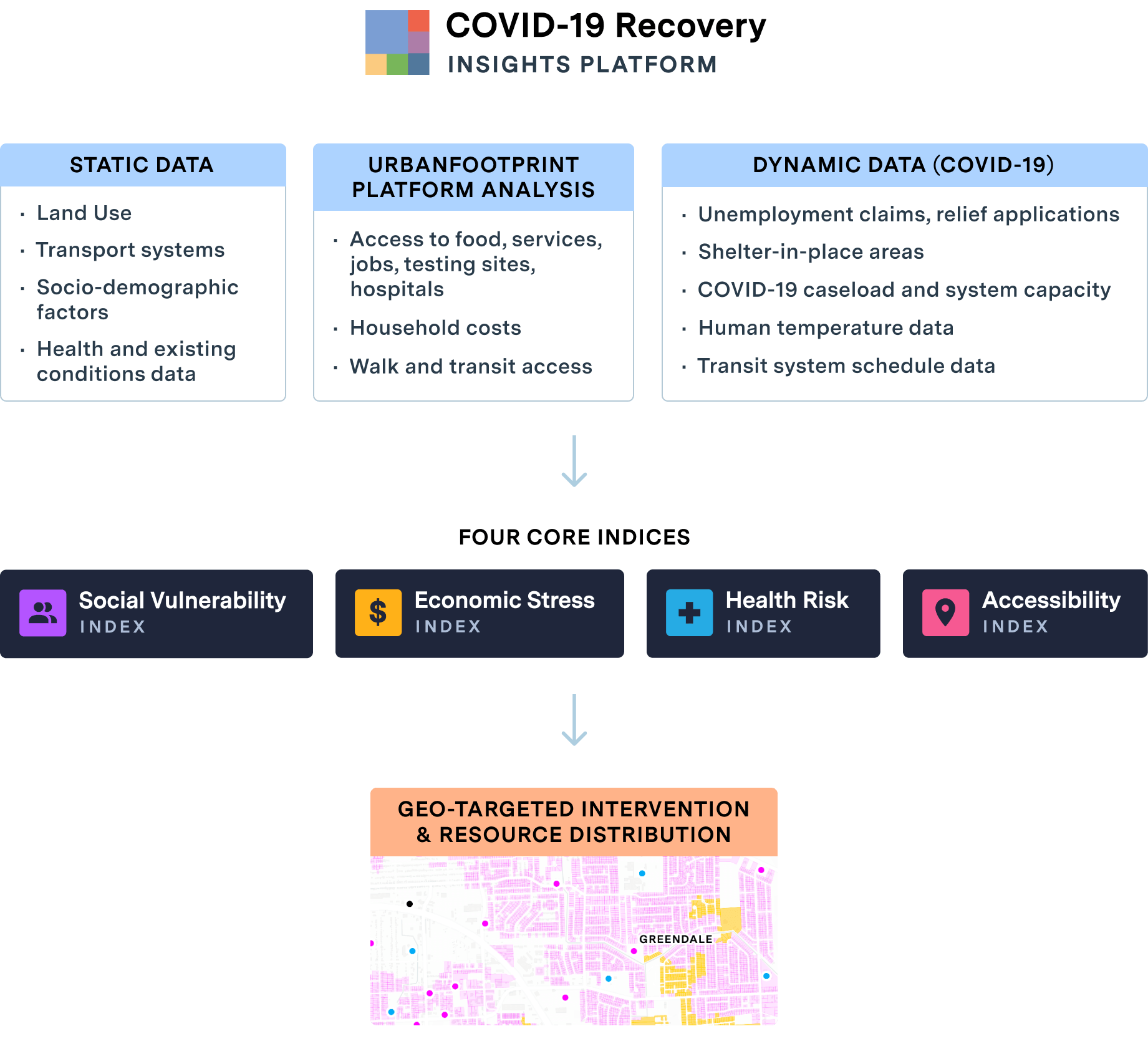
How does UrbanFootprint map and analyze data to understand food security?
Food insecurity measures the difficulty of having reliable access to a sufficient quantity of affordable, nutritionally adequate food. In food insecure communities, families are forced to make tradeoffs between important basic needs such as food and medical care.
UrbanFootprint’s Food Security Index lays out the evolving scale of the challenge by evaluating a combination of socio-economic factors, jobless claims and economic stress indicators, pre-existing health conditions, and access to grocery stores and healthy food.
Critically, the Food Security Index shows both how the pandemic has increased the number of people facing challenges in Louisiana, as well as the distribution of food insecurity across the state.
COVID-19 in Louisiana: Using location data to understand food security and inform an equitable recovery.
Exposing Long-Standing Vulnerability
The immediate needs resulting from the pandemic are exposing long-standing vulnerability and highlighting deep inequities in resource distribution and access to opportunity. Even before the crisis, over 1 million Louisiana residents lived in food insecure communities, making the state one of the worst ranked for hunger. Today, that number has risen to more than 1.6 million, with more than ⅓ of the population living in areas with low Food Security.
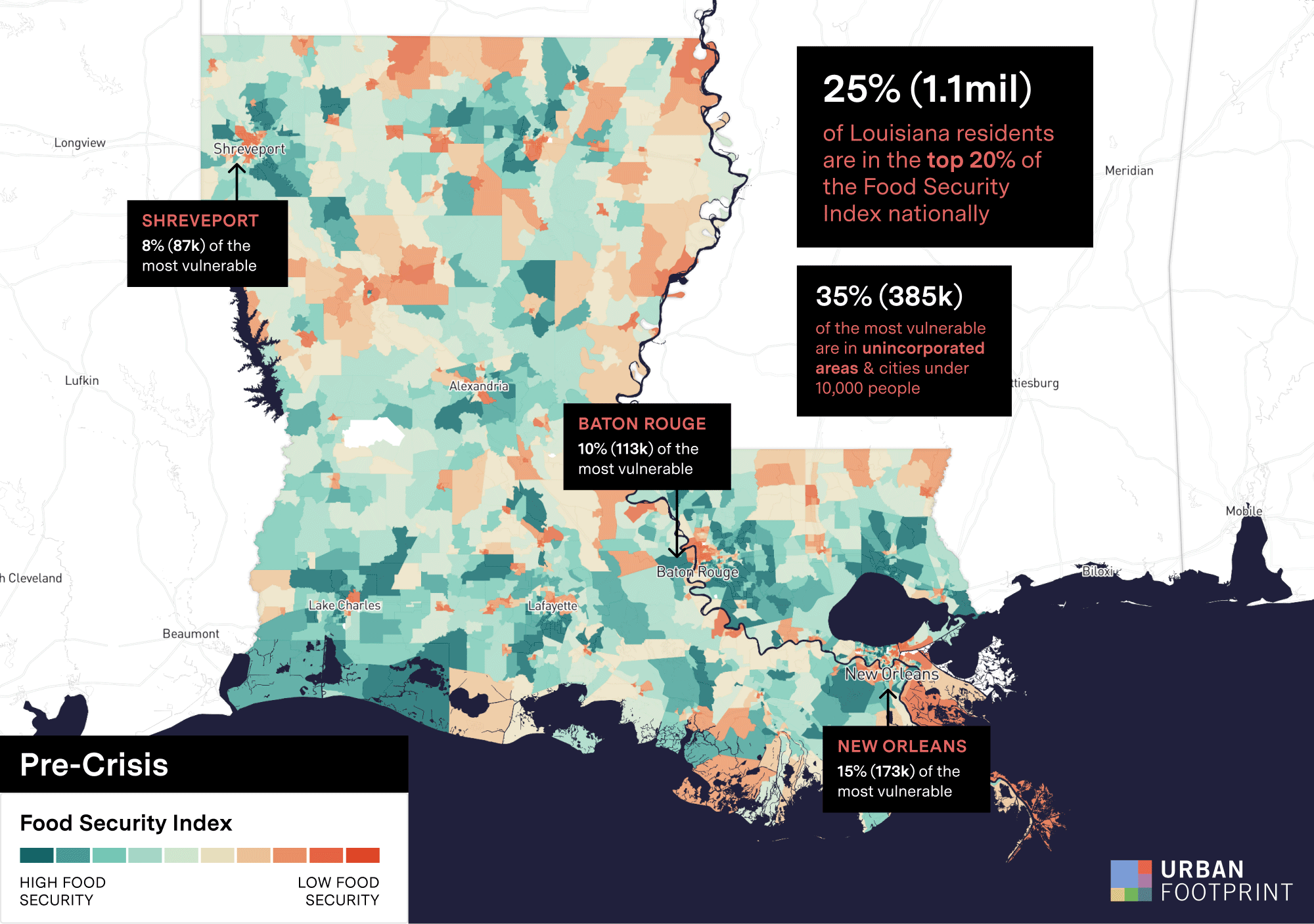
In practice, living in a food insecure community is an assault on multiple fronts: poverty and lack of employment options, crowded or low quality housing, lack of easy access to healthy food, and/or underlying health risks. Maps and analysis show that communities experiencing these challenges before the crisis are seeing increasing pain, and are being joined by additional areas that are seeing new Food Security challenges rise as the economic situation degrades.
Economic Stress Spreads Across the State
The baseline, pre-crisis social and economic stress level serves as the backdrop for the sharpest rise in unemployment ever recorded in Louisiana and the nation as a whole.
In a six week period, the unemployment rate in Louisiana increased nearly five-fold, from 6.9% to 32%*, with more than 550,000 jobless claims from early March to May 2nd. In New Orleans alone, 73,500 jobs were lost and unemployment reached nearly 50%.
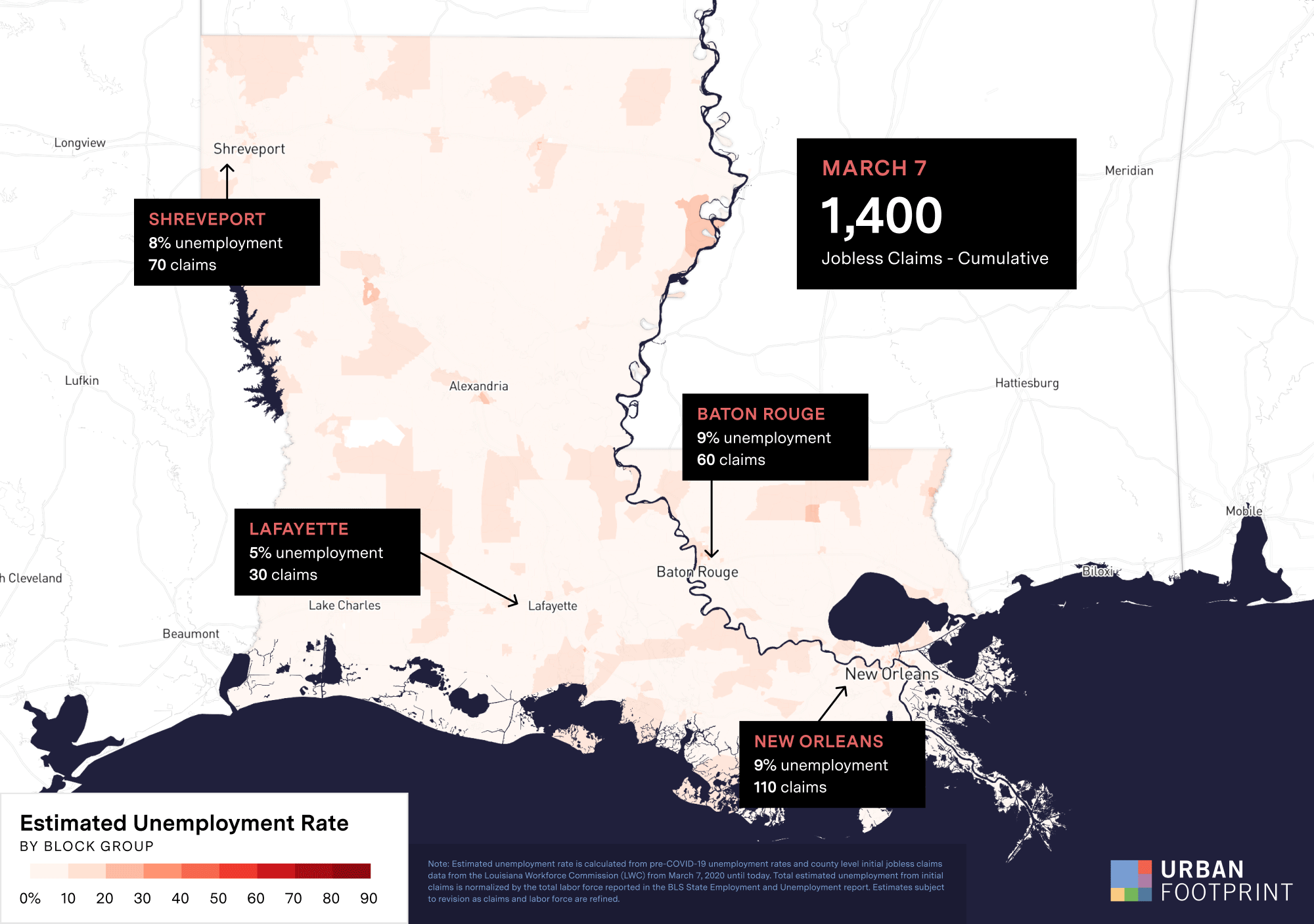
The Hardest Hit Communities
Rapidly rising unemployment, along with underlying social, health, and food accessibility conditions has triggered a major increase in the number of Louisiana residents living in food insecure communities. Food insecurity has increased dramatically in New Orleans and Baton Rouge, where approximately 65% of residents live in food insecure communities.
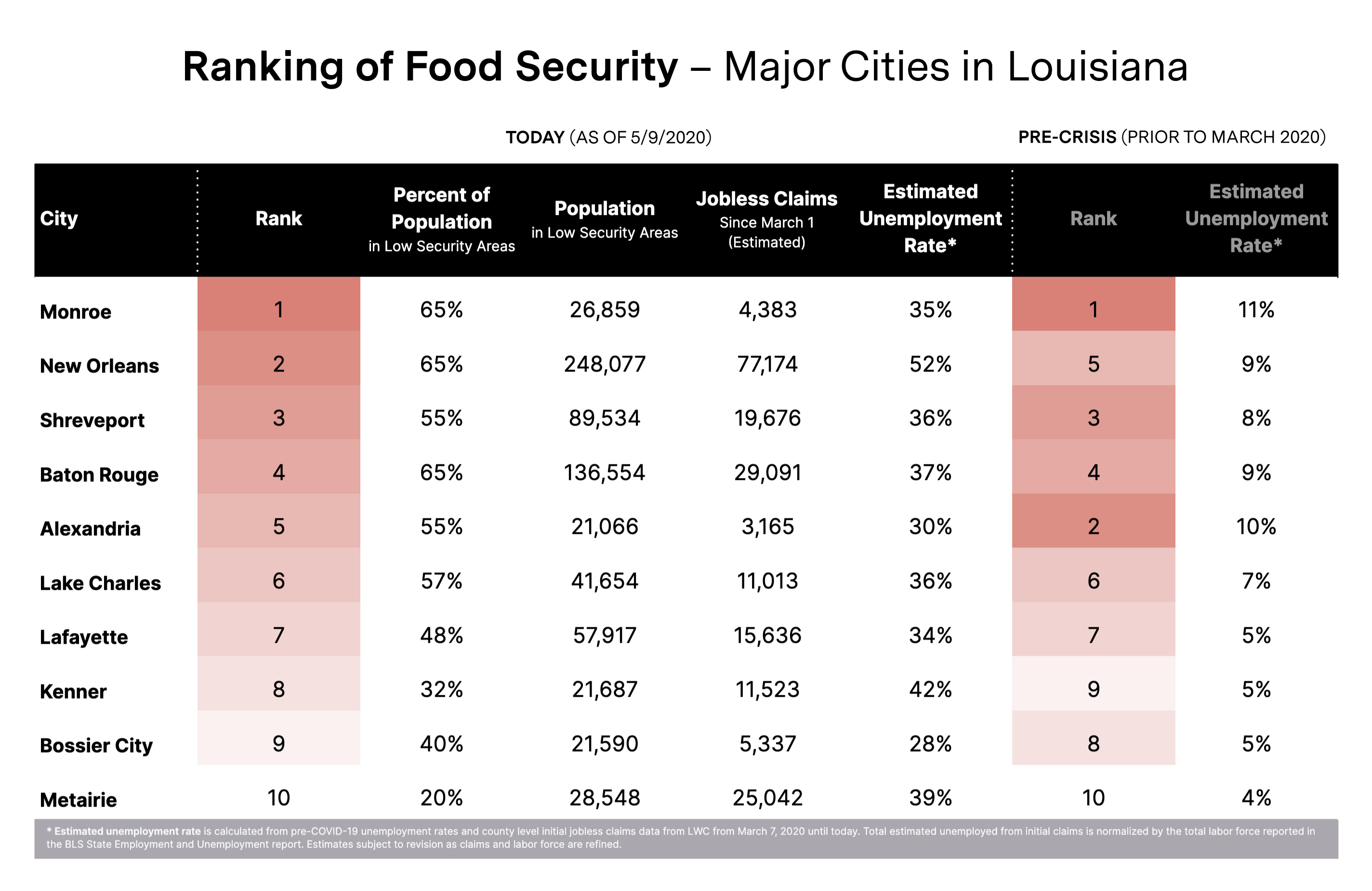
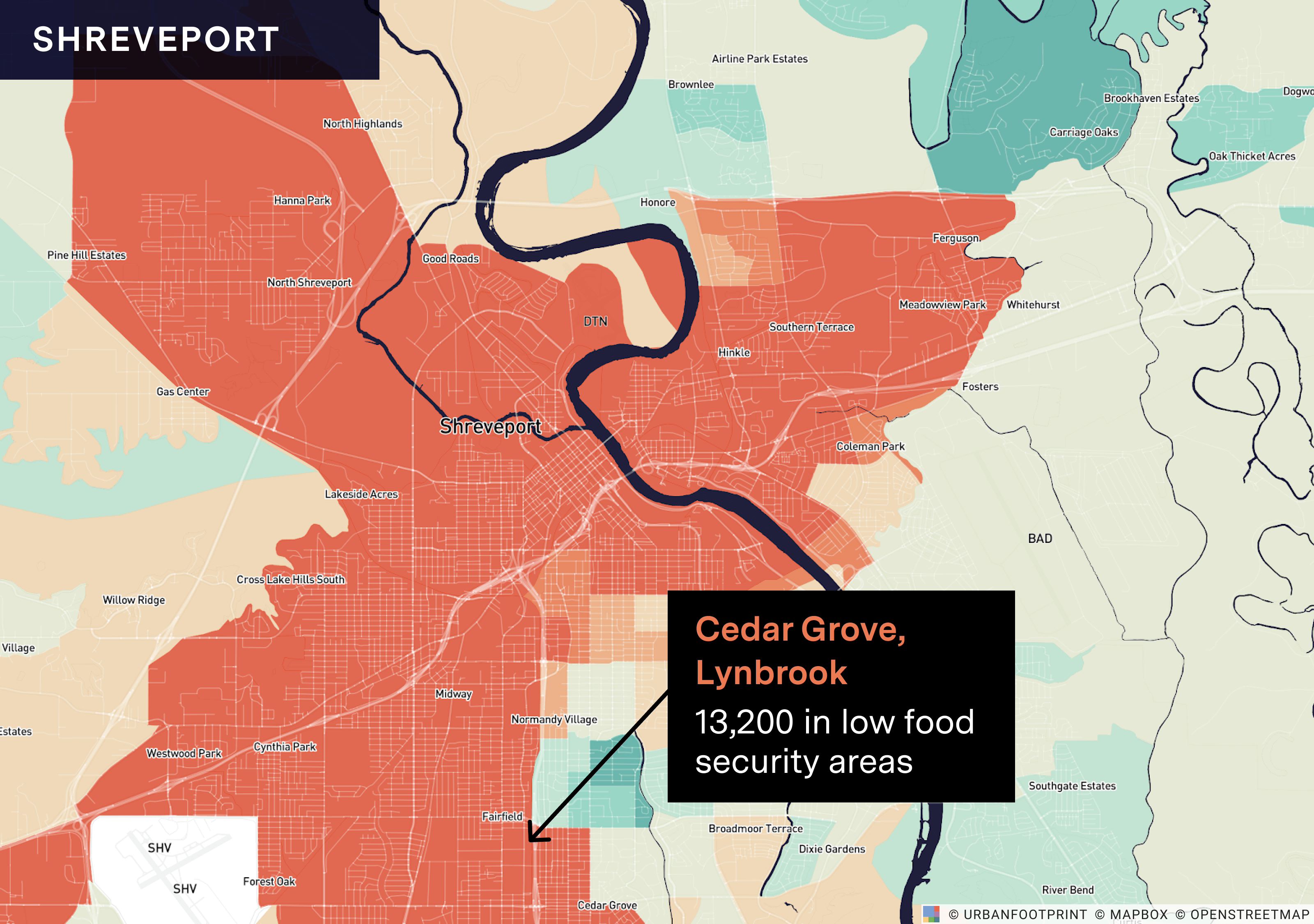
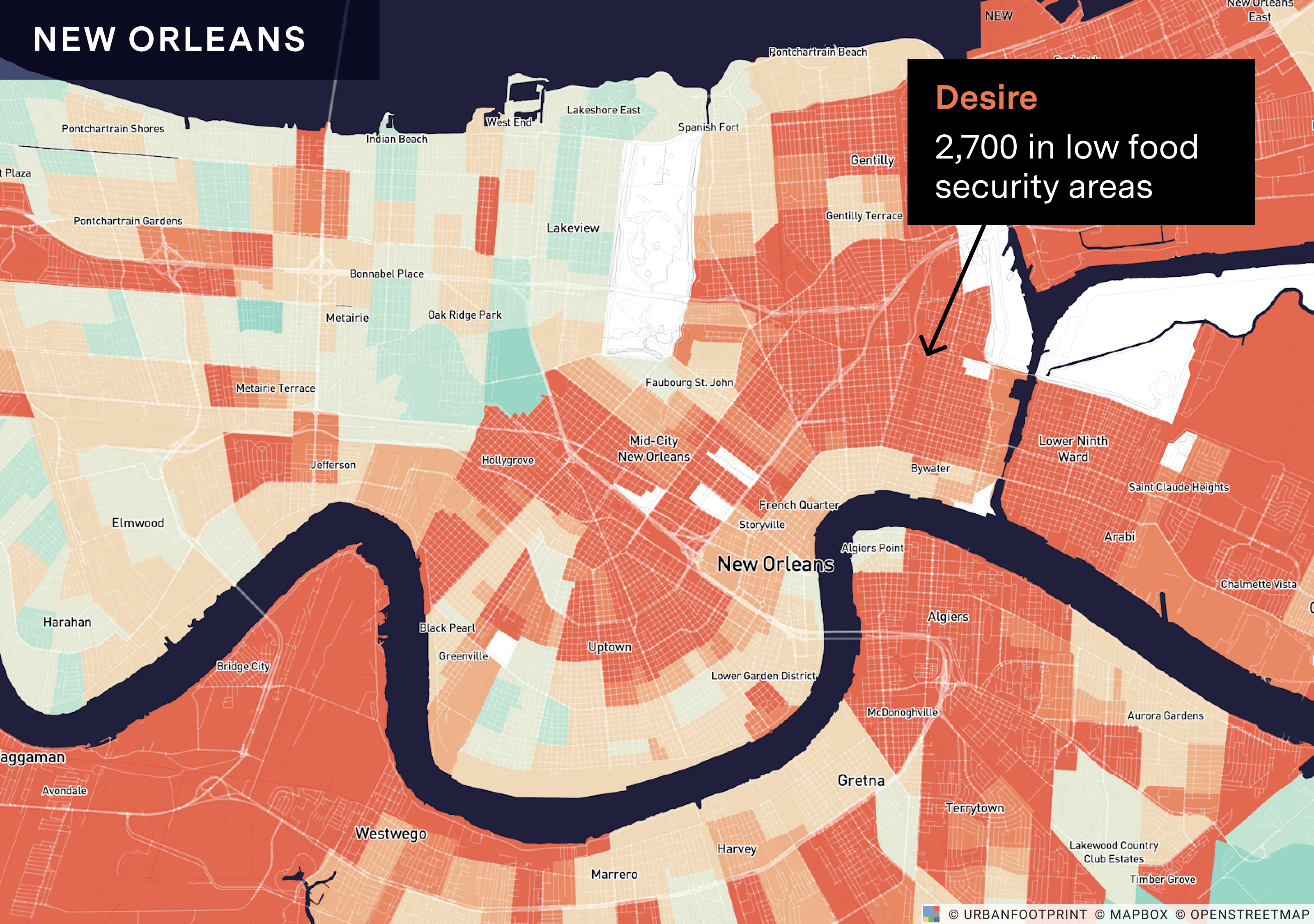
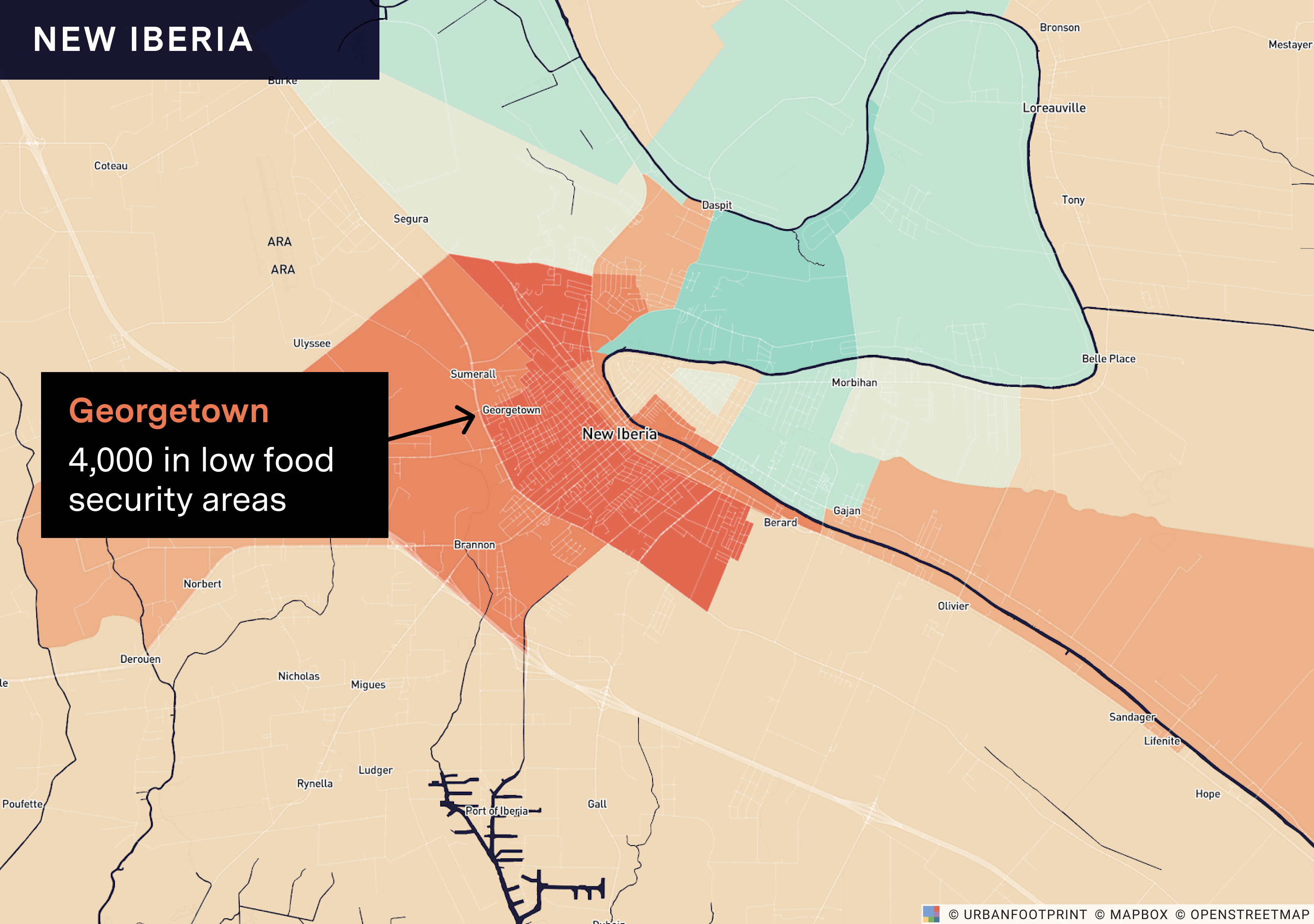
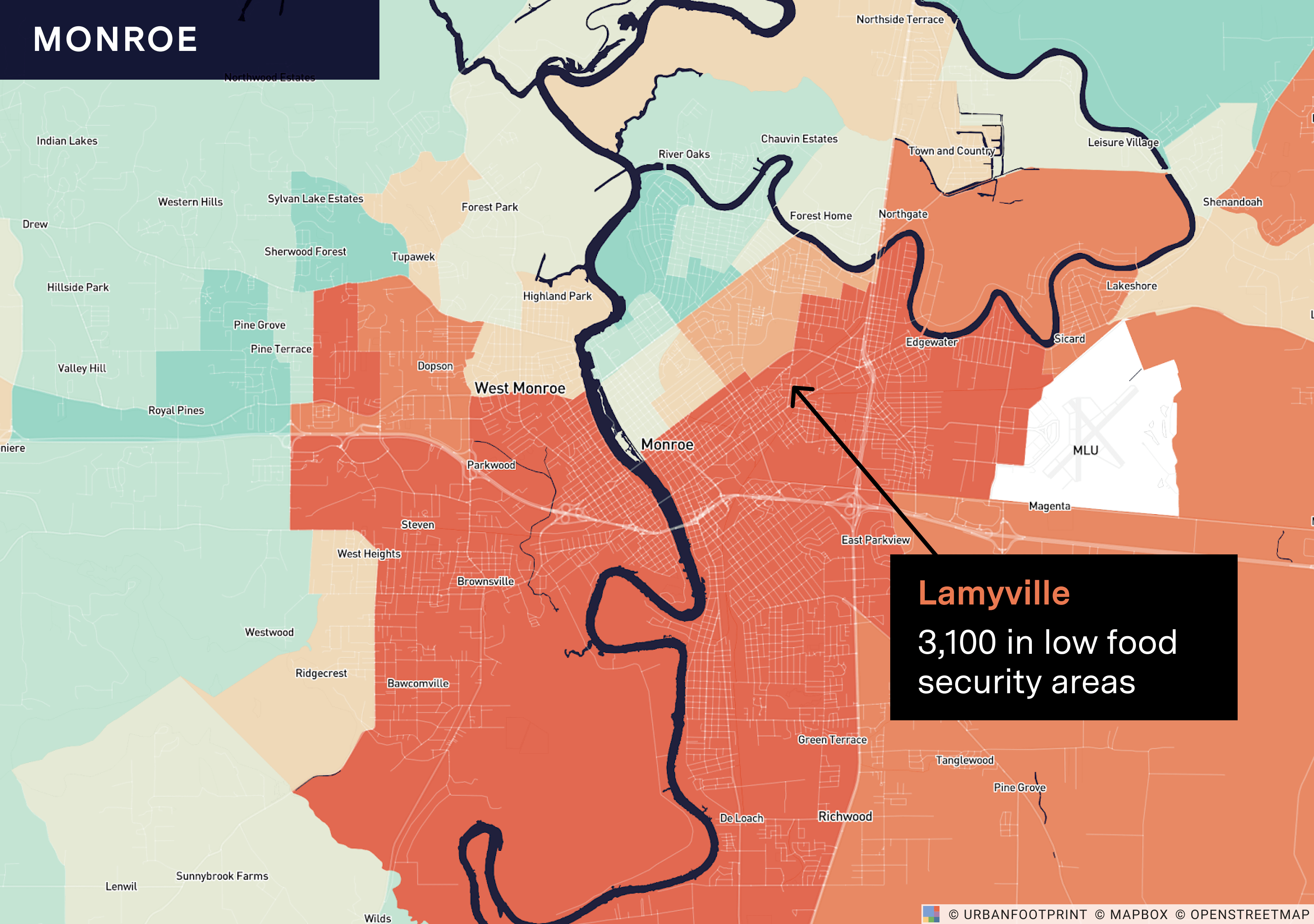
Small towns, many of which have long standing food security challenges, are also experiencing more demand for food relief. And critically, rural and unincorporated areas account for more than half of the newly food insecure areas in the state.
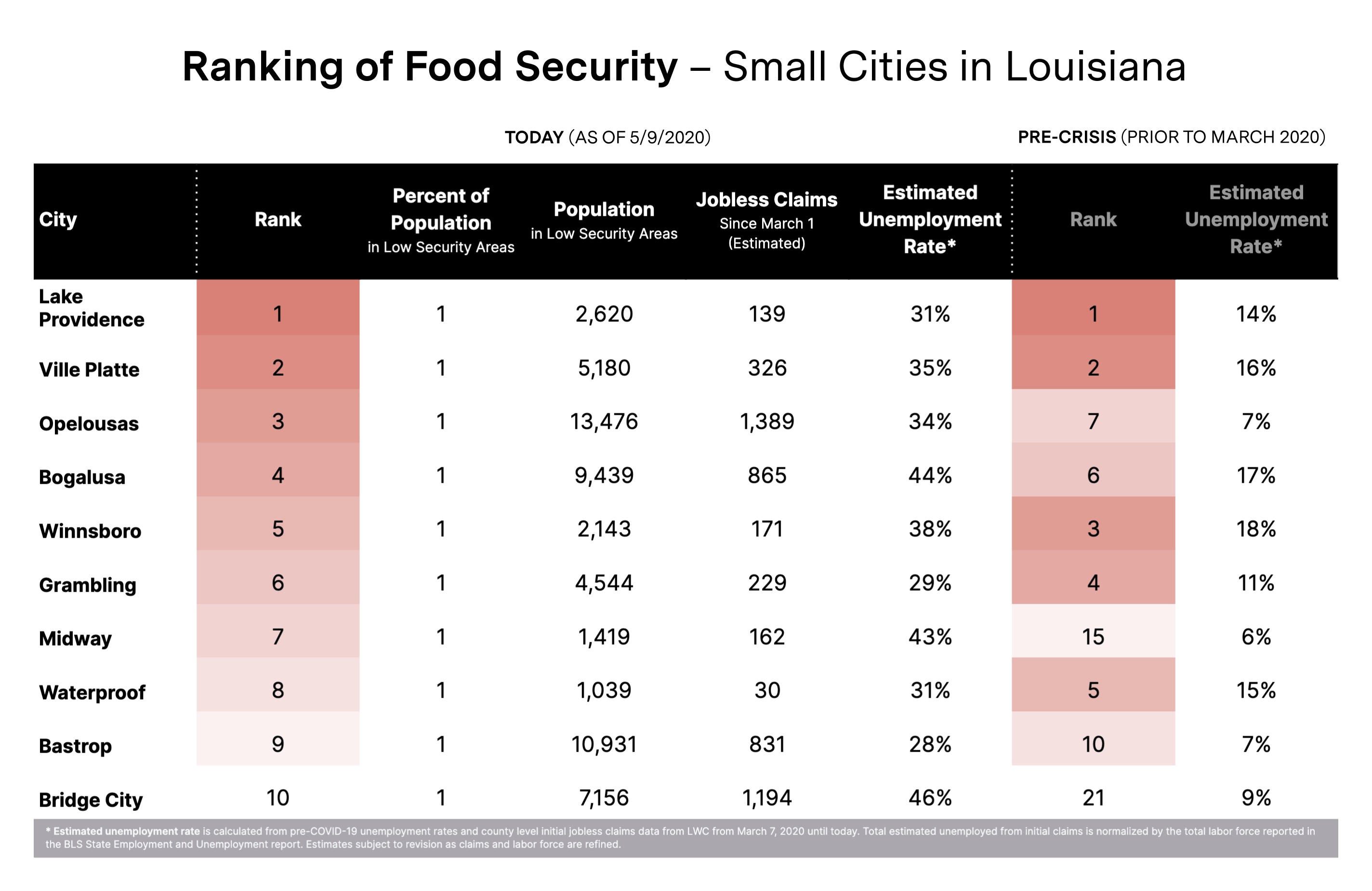
Geo-Targeting Interventions in Baton Rouge
In Baton Rouge, the number of residents living in food insecure communities has risen from 113,000 to 137,000.
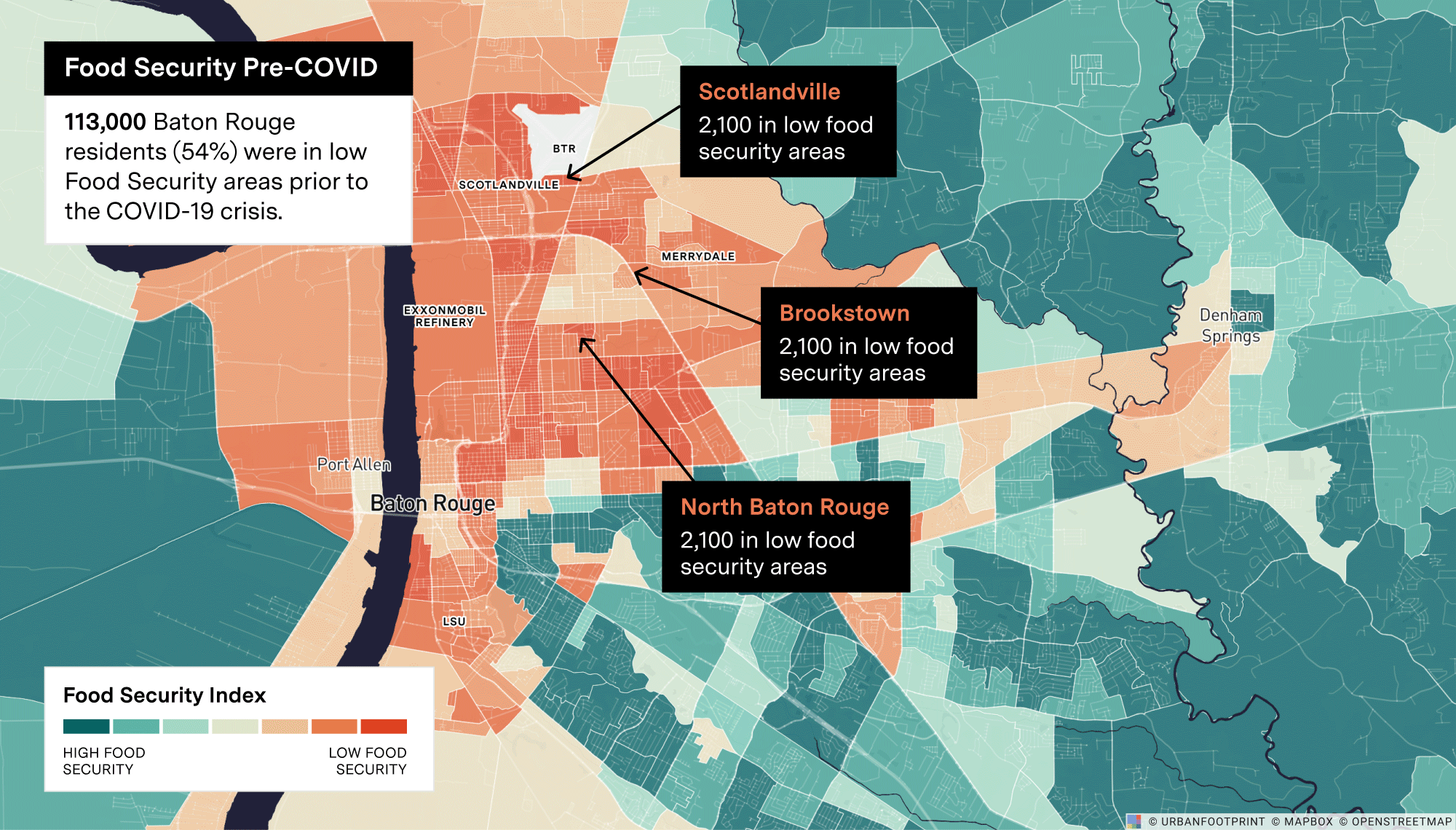
As a planning tool, the COVID-19 Recovery Insights Platform is helping the City of Baton Rouge, Feed Louisiana and the Baton Rouge Food Bank understand the scale and distribution of the food security challenge and close the gap between supply and demand by identifying locations that can reach the most at-risk residents.
To identify possible intervention locations, we first identified the location of food suppliers and grocery stores. We determined that around 200,000 households in the metro area do not live within a 10 minute walk of one of these locations.
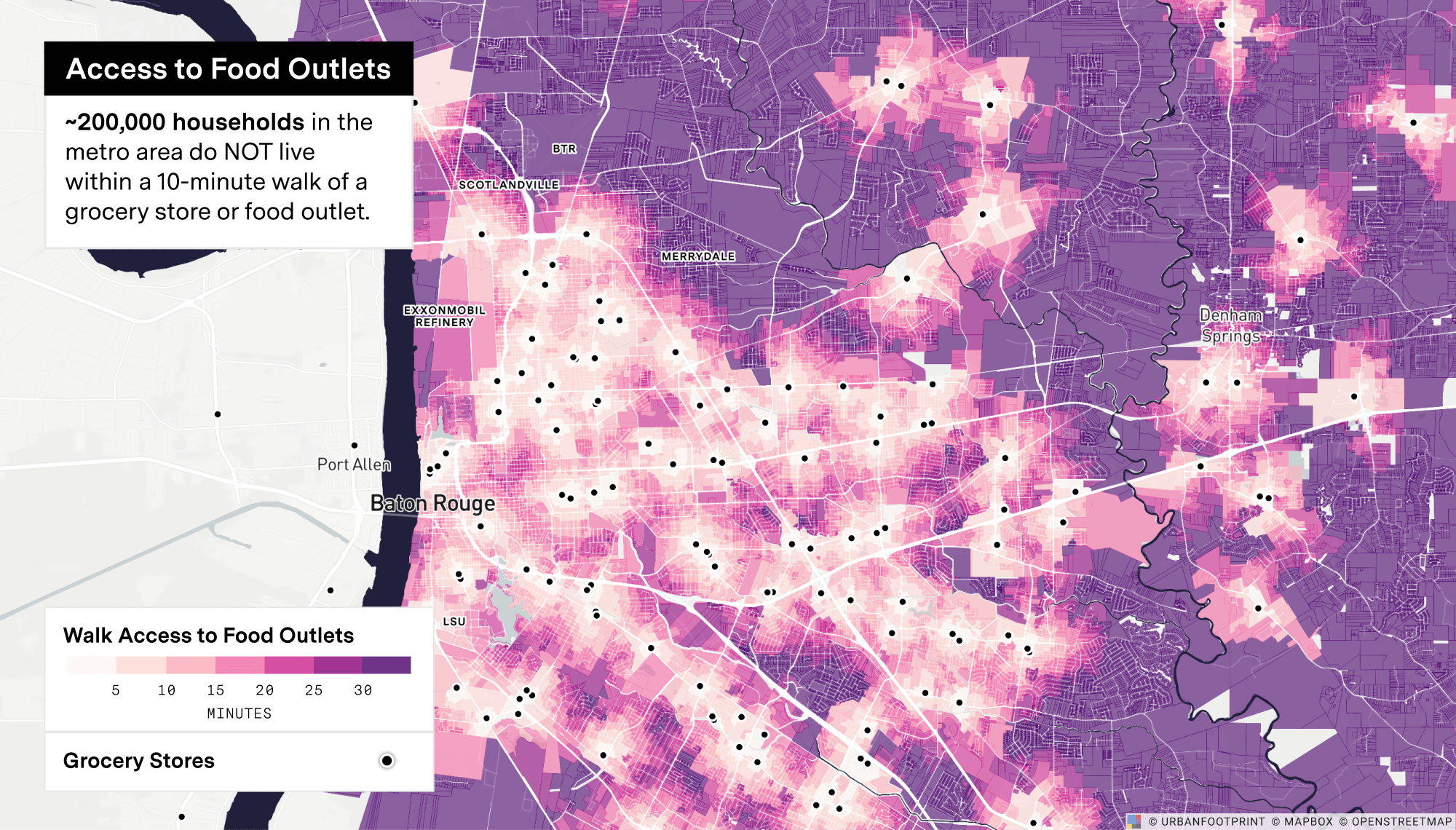
Amongst the neighborhoods with low levels of accessibility, we then identified the communities that faced the most extreme risk because of job loss, health risk and other socio-demographic factors.
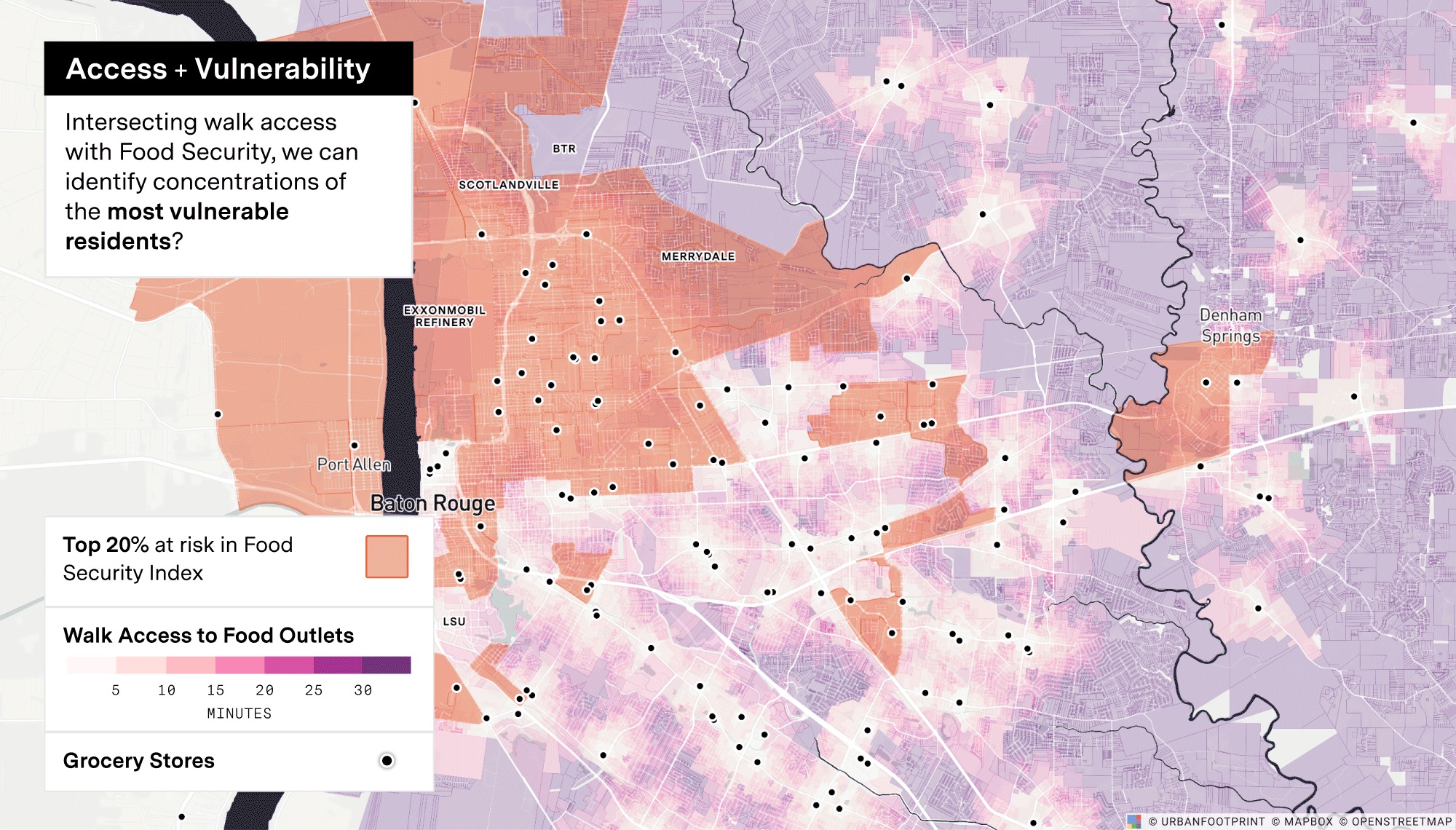
Next, we examined possible locations for popup food pantries or food distribution sites in the communities where food insecurity is greatest. For example, placing popup food pantries at schools and religious organizations could lead to improved access for over 13,000 residents in Baton Rouge.
In yellow, we see vulnerable households without access to grocery stores in north Baton Rouge.
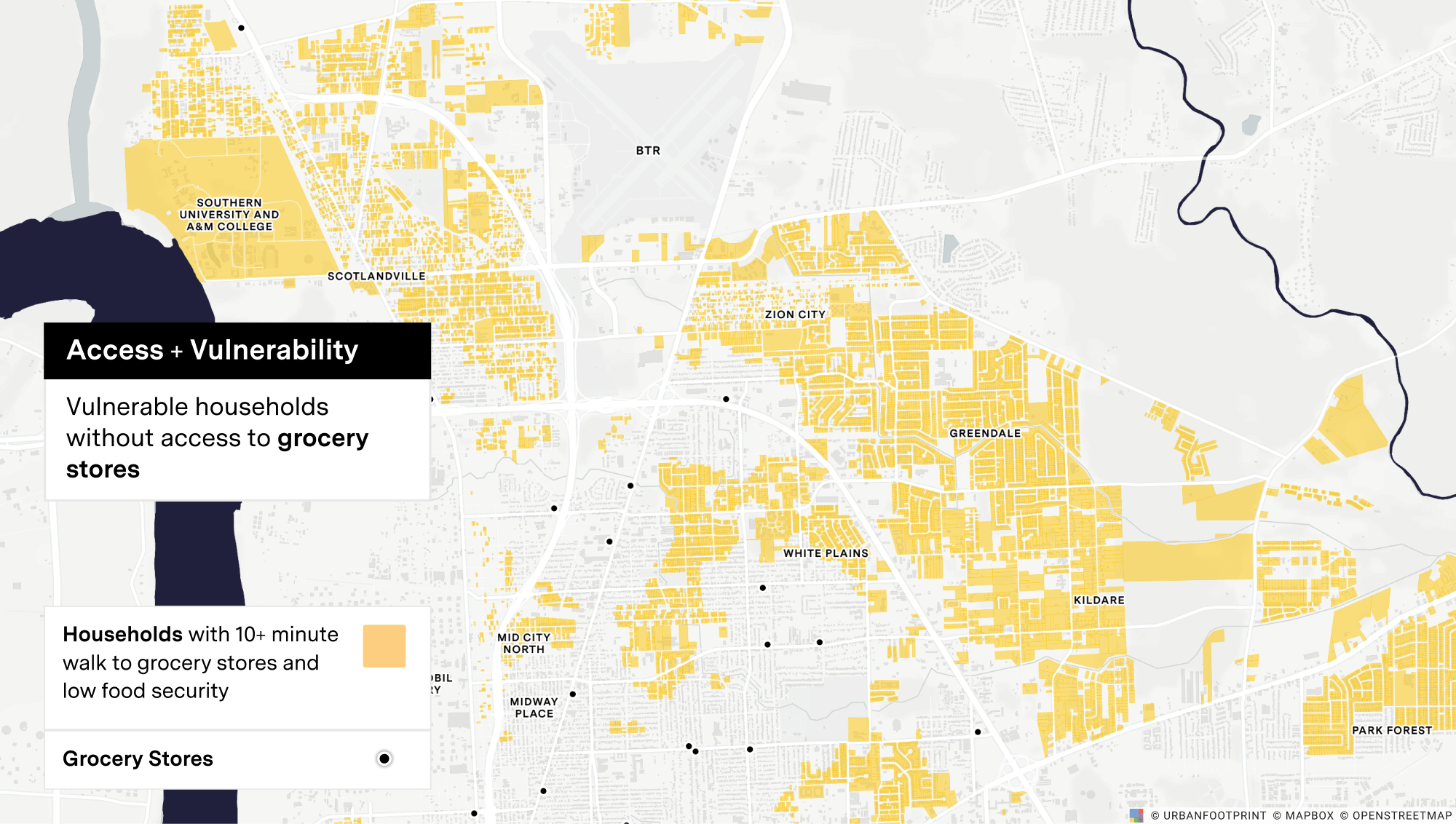
What if we used schools as additional sites for food delivery? Across the metro-area, ~14,000 households would see improved access to food if we used these school sites.
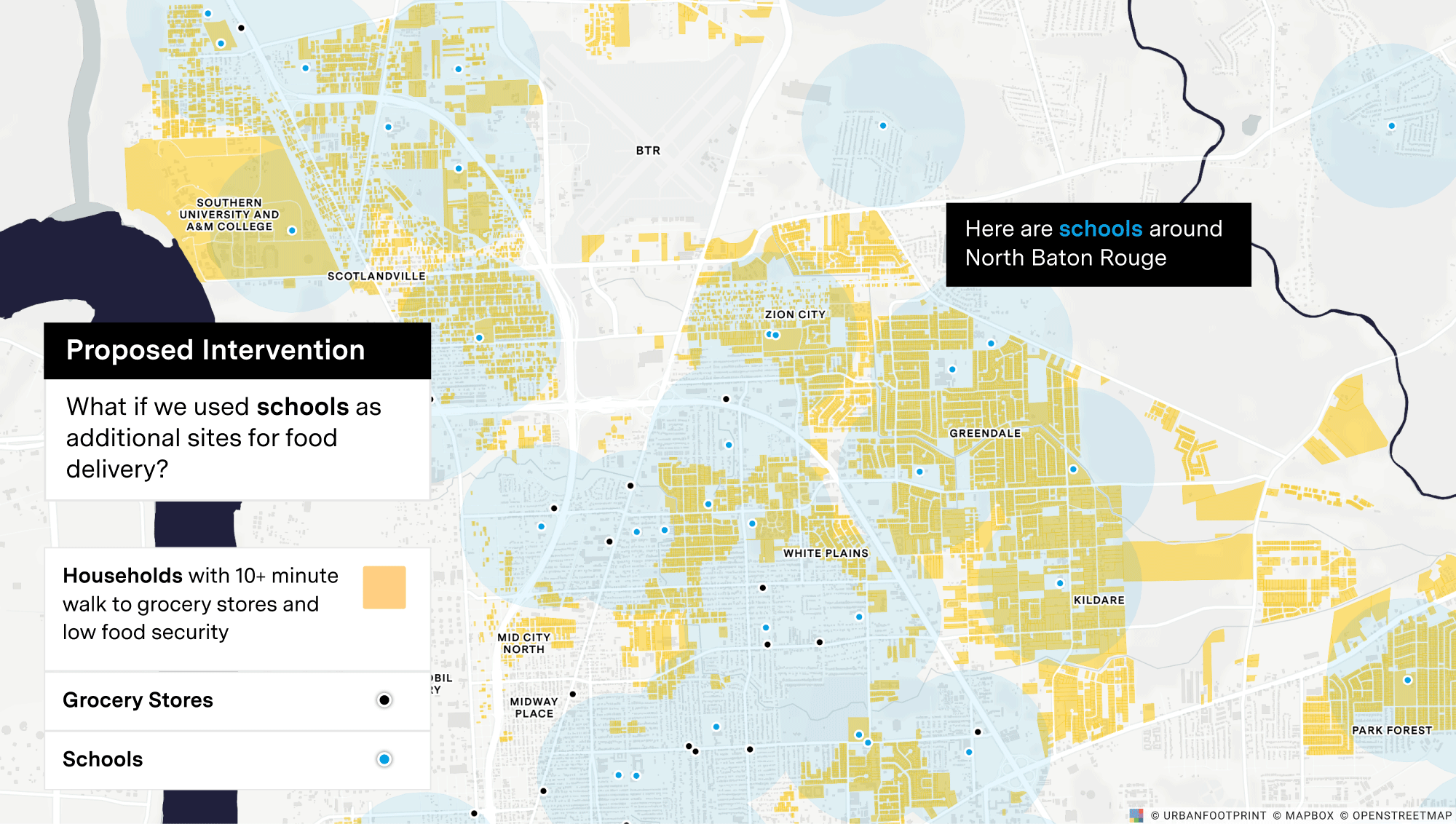
What if we also used religious orgs as additional sites for food delivery? An additional ~13,000 households (metro-wide) would see improved food access if we used both schools and religious organizations.
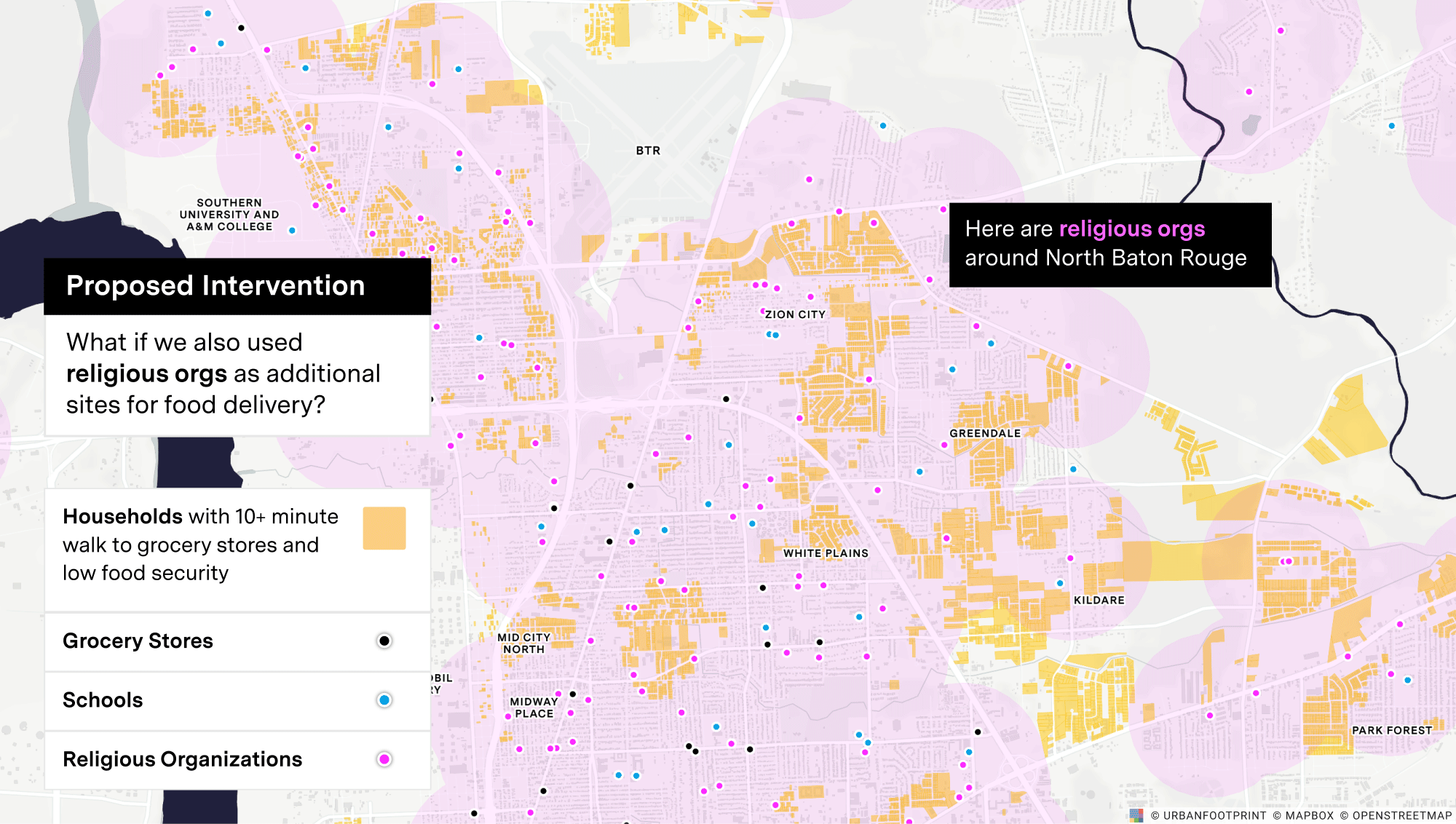
Toward a New Model of Resilience
The COVID-19 pandemic is triggering expansive health, economic, and social crises and exposing deep-seated vulnerabilities in communities across the nation. A comprehensive, data-driven view is critical in understanding the evolving scale of the challenges facing our communities, and also how the challenges are distributed across our cities and communities.
Amidst a series of daunting and unprecedented challenges, we see a once-in-many-generations opportunity to take a step back and use data-driven insights to distribute resources more effectively and more equitably. In doing so, we build up more inherently resilient communities that can better withstand stress and crisis and are better poised to succeed in the long term.
This is a rare moment to reflect on how to do things better and on how technology can serve us in improving the places we live and work. We are proud to be partnering with CPEX and Louisiana communities to address the food security crisis and advance a robust data-driven approach to long-term community resilience.








